The innovators: devices and services to improve maternal and child health
Roula Khalaf, Editor of the FT, selects her favourite stories in this weekly newsletter.
There is no shortage of good ideas in the world, but many existing ones remain stuck in “innovation bottlenecks” as they struggle for attention, funding or the means of implementation. Below, the FT has identified a number of new projects with the potential to ease the burden of maternal and child mortality around the world. These projects are already underway and have shown signs that they could be even more successful at scale. But in order to be sustained or replicated, they need additional support such as funding, technical assistance, support or backing from policymakers.
If you are interested in getting involved with any of the projects, or would like to suggest other innovations for promotion, contact us at showcase@ft.com
Skin to skin: in Cameroon kangaroo mother care is being promoted as a cheap and effective way to care for newborns
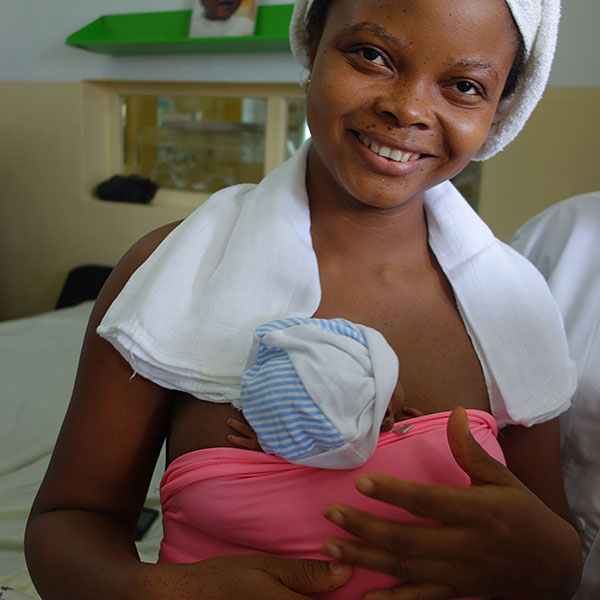
The project
The Cameroon government, in conjunction with the Kangaroo Foundation, Grand Challenges Canada (a Canadian government-funded innovation fund), Social Finance (a UK non-profit) and the World Bank’s Global Financing Facility, is developing a performance-based financial bond to expand the use of a cheap and effective way to care for premature babies across the country.
The need
Around 18m children each year are born prematurely or underweight, which is the cause of three-quarters of neonatal deaths. These babies also have a higher risk of infection, long-term health problems and abandonment by their mothers. Existing techniques such as incubators are often too costly or impractical to be used in poor regions, without local staff or support.
How it works
Kangaroo mother care, first devised in Colombia in 1978, is a low-tech approach that uses constant skin-to-skin care between mothers with their children, exclusive breastfeeding and early discharge from hospital with close follow-up. A financial bond, set to launch in 2017, will raise up to $9m to implement “training the trainers” for its use in up to five regions in Cameroon. Investors will be reimbursed, and will potentially receive a bonus, if targets are met.
The impact
Kangaroo care has been shown repeatedly in rigorous studies to reduce infection and infant abandonment, and to improve survival and maternal attachment to babies. A pilot study in Douala, Cameroon, that began last year showed that kangaroo care reduced neonatal mortality from 43 per cent to 28 per cent. Other social impact bonds have demonstrated the potential to raise money and link reimbursement to improved outcomes.
What is needed next?
• Investors for the bond, both those seeking social and financial returns.
• Donors to cover costs and bonuses.
• Evaluation partners to develop and study outcomes, including access to care, impact on mortality and morbidity.
• For the Cameroon government over time to draw the lessons and itself tailor and fund kangaroo care across the country.
• Support to integrate care with other services.
From bottles to births: a simple but effective invention by an Argentine mechanic could help ease complicated births
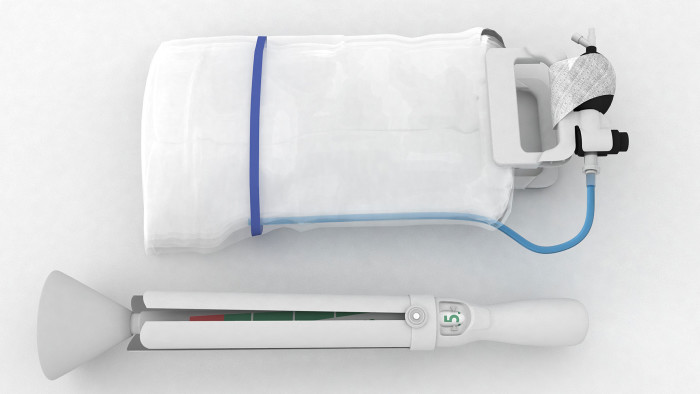
The project
Becton Dickinson, a US medical technology company, is developing a simple device to ease complicated births around the world, in partnership with its Argentine inventor and the World Health Organisation.
The need
A quarter of all neonatal mortality and nearly half of stillbirths occur during labour and child delivery, with an estimated 9 per cent of all maternal deaths caused by prolonged or obstructed labour. The current use of forceps and vacuum extractors has been unchanged for decades. Both are complex, carry risks for mother and baby and require healthcare workers with a level of training not always available in low- and middle-income countries. The alternative is caesarean section, but this requires access to surgical facilities and increases the cost and risk of infection.
How it works
The Odón device was conceived by Jorge Odón, a car mechanic who was inspired by a simple method to remove a cork from a bottle using a plastic bag. Becton Dickinson is spending $20m developing, testing and scaling it for use in childbirth. The basic design consists of an applicator to locate the baby’s head and a plastic sleeve with a pump and inflatable collar to deliver the baby. The plan is to launch it in 2019.
The impact
A first testing of the device on 48 women in Argentina showed very promising results, and a larger-scale clinical trial is set to begin in South Africa this month ahead of clinical trials in Europe and India in 2017. With plans for modest pricing in lower-income countries, cross-subsidised by higher prices in richer ones, it offers potential for improved, affordable and accessible birth assistance.
What is needed next?
• Regulatory backing if the device is shown to be safe and effective, so that it is rapidly approved in many different countries without imposing additional requirement and delays that slow its uptake.
• International funding from donors or investors to help order, manufacture and distribute widely, so it can achieve economies of scale and permit a cross-subsidy to make it affordable to the poor.
• “Last mile” support to integrate the device with state and non-governmental organisations, to supply, train and provide widespread access to women even in the poorest and most remote areas.
Contracts for care: a scheme to provide medical equipment across Kenya
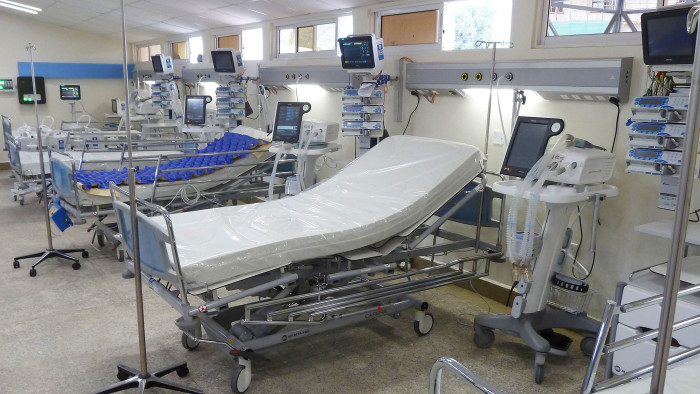
The project
An ambitious 10-year, Ks38bn ($375m) “turnkey” financing and delivery contract between the government of Kenya and five international companies to provide and maintain medical equipment across the country and train users.
The need
In many poorer countries, medical equipment to improve diagnosis and treatment is in scant supply. Even where it has been purchased in the past, the absence of adequate staffing, training and maintenance means it frequently breaks down and is abandoned. The high up-front costs are a barrier to governments buying equipment and improving their services.
How it works
The Kenyan government launched an international tender and contracted companies to supply and support radiology, intensive care units, dialysis and surgical facilities in hospitals in all the country’s 47 districts. It has undertaken to provide the basic infrastructure, while the companies supply and ensure that their equipment is functioning 98 per cent of the time, receiving payments every quarter if they meet these targets.
The impact
The contract, for which negotiations began in 2014, is now operational, with facilities across the country, while previously many of the services were only available in one or two places. Initial evidence suggests that it is functioning well, improving the reliability, speed, access and accuracy of services to tackle ill health more rapidly and efficiently. It has also generated large numbers of local jobs, from healthcare workers to technicians, and triggered risk-sharing and funding between the providers and local financial institutions.
What is needed next?
• Technical support for legal advice, insurance and finance for future expansion or replication.
• Evaluation to establish clear baselines and, over time, measure the wider impact of the programme, including its effect on increased identification and demand for services, and changes in outcomes and cost.
• Broader funding, including the introduction of healthcare expenditure to ensure sufficient staff and facilities to cope with the equipment and the referrals that result.
• New vendors to extend the programme to other functions, including laboratory equipment, neonatal and dental care, and laparoscopy.
• Other countries to follow Kenya’s pioneering model in Africa, adapting a model more typically found in richer nations.
On the road: a scheme to bring health advice and medicine into the home
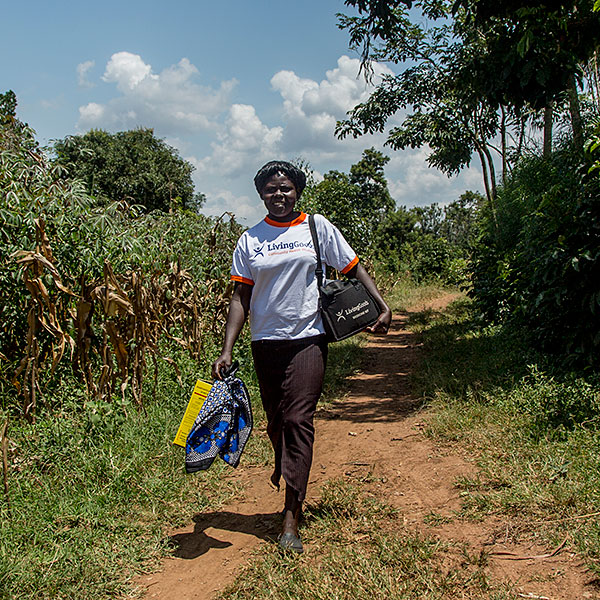
The project
Living Goods, a US non-governmental organisation, in partnership with Brac, the microfinance social enterprise, manages a network of paid community workers who provide health education, diagnoses, referrals and affordable treatments to villagers in Uganda.
The need
Many health systems are underfunded or badly managed, resulting in high unnecessary illness and death. They are often inaccessible, unattractive or under-staffed and without medicine stocks. Sometimes in more remote areas, they are supported by unpaid community health volunteers who are well-intentioned but frequently overstretched unsupervised or not supplied with medicines.
How it works
Inspired by Avon Ladies (who sell cosmetics door to door), Living Goods recruits trusted local independent part-time agents, trains them and pays them modest commissions on sales of essential medicines and other commodities such as water filters. Each goes door-to-door across a catchment area of 150-200 households and provides free health education and diagnosis using tools such as a SmartHealth app that draws on official health guidance. They receive additional incentives to register pregnant women and visit them 48 hours after birth to check on the health of the mother and child. In total, they earn $10-$20 a month. Service delivered to the home can be “cheaper than free” by removing the time and cost of travelling to clinics.
The impact
Living Goods plans to reach 5m people by the end of 2016. It costs $2 per person per year in the catchment area. A study published this year suggested the programme reduced under-five child mortality by 27 per cent compared with districts without the service. It has spread the model to Kenya, and has worked with partners in Zambia and Myanmar.
What is needed next?
• Funding to expand the project across Uganda and Kenya, providing scale and a chance to test how it operates as a national programme.
• Partnership with government and multilateral donors to contract directly with the organisation to provide community health services.
• Corporate connections for support in kind, including the supply of smartphones, SMS, new products, services and medicines.
• New countries willing to explore the model and develop a community health policy.
• Links with other organisations in target countries onto which Living Goods can piggy-back to expand.
• Advocacy groups to share experiences to lobby for improved community healthcare.
Kwara Care: a west Nigerian state wants to make health insurance affordable
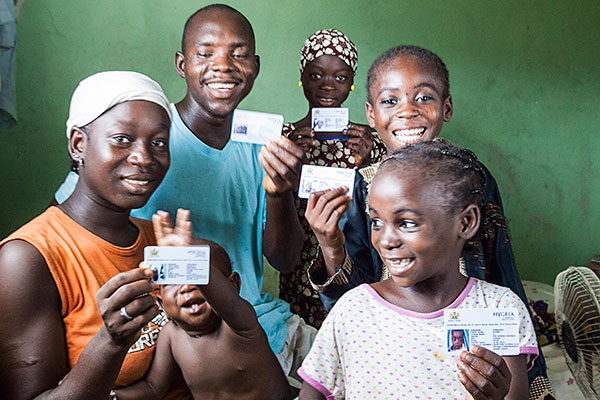
The project
The government of the west Nigerian state of Kwara, Nigerian private insurer Hygeia, the Netherlands government and charity PharmAccess Foundation have created the first state health insurance programme in Nigeria, to provide affordable and quality healthcare for poor people.
The need
Nigeria has the largest population in Africa. Yet this country, where most people live below the poverty line, has some of the world’s highest maternal and child mortality rates. Nearly three-quarters of medical costs are paid by patients out of their own pocket, discouraging access to quality healthcare.
How it works
The scheme offers primary and limited secondary healthcare services, with premiums from poor people subsidised by the Dutch Health Insurance Fund and increasingly by Kwara state. Services are provided by both public and private healthcare facilities, which must participate in a medical quality improvement process. There is an extensive evaluation process.
The impact
Nearly 350,000 people have enrolled on the scheme and have made almost 1m visits to 42 facilities. The latest evaluation in 2013 concluded the scheme offered “considerable positive impact”. Those covered by the scheme took far greater advantage of modern healthcare and spent less of their own money on health. Hospital deliveries rose 77 per cent and there was some evidence of a decline in hypertension. The cost was $28 per person per year.
Plans for the future
The aim is to shift from external funders to local resources, and to expand coverage to all residents of Kwara state. A state health insurance law has been developed and sent by the governor of Kwara state to the Kwara House of Assembly for discussion and adoption. The law is designed to create mandatory state health insurance, whereby richer people will cross-subsidise the poor. Since last year, Kwara state has been working on a health insurance fund.
What is needed next?
• Political support to create the state-wide health insurance system and to encourage similar approaches elsewhere.
• Technical advice for fine-tuning the health insurance system for a diverse population; training; and the creation of the planned state health insurance agency to handle issues such as management, contracting, monitoring and auditing.
• External funding for an estimated $5m initial capitalisation for the state health insurance fund, plus continued support of the low-income premium subsidy after the end of 2016.
Want to help?
Email: showcase@ft.com
Comments